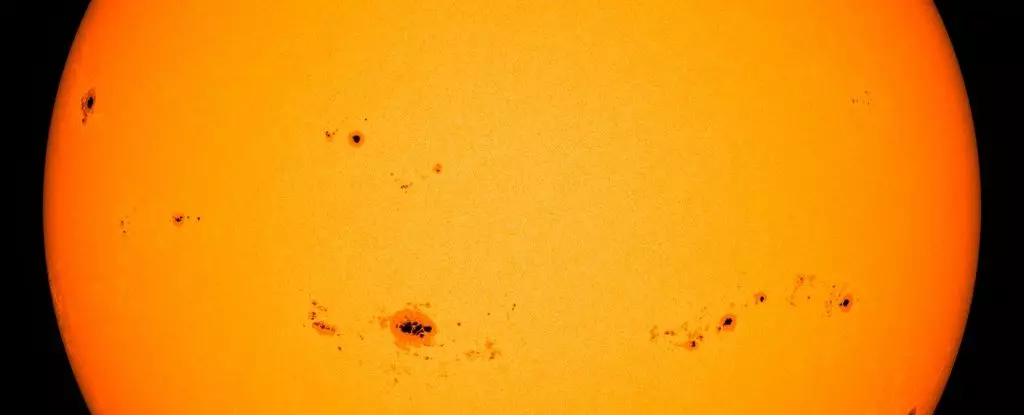Prepare for a surge of solar activity, as NASA, NOAA, and the Solar Cycle Prediction Panel have officially announced the onset of solar maximum. This phase marks the peak of the Sun’s 11-year activity cycle, leading to an increase in phenomena such as sunspots, solar flares, and coronal mass ejections. These tumultuous solar events are episodic, yet they can have significant implications for both space weather and our planet. Although we are witnessing the rise of solar activity, predictions regarding its apex remain speculative; the exact timing of peak solar activity will not become apparent until after solar maximum has concluded.
The Sun is a constant presence in our lives, crucial for sustaining life on Earth. However, it is far from unchanging. The Sun undergoes complex cycles driven by magnetic forces, one of which is the aforementioned 11-year activity cycle. Scientists have made strides in understanding these phenomena, yet many mysteries remain. According to solar astrophysicist Michael Wheatland, understanding the solar dynamo, the mechanism responsible for magnetic activity and successive sunspot formations, presents a challenge that has yet to be fully deciphered.
Research indicates that while solar cycles last about 11 years on average, their lengths and intensities can vary considerably. This unpredictability complicates the modeling required for accurate solar forecasts. Consequently, when scholars say “we can’t reliably predict solar cycles,” it reflects a broader challenge in astrophysics — the intricacies of the Sun’s behavior defy straightforward predictions.
Sunspots serve as a crucial indicator of activity during a solar cycle. When magnetic fields strengthen and become disorganized, sections of the Sun’s surface cool, forming darker areas known as sunspots. This marks the transition towards solar maximum, a phase characterized by a profusion of sunspots reminiscent of freckles scattered across the face of a tanned individual. Accompanying sunspots, solar flares and coronal mass ejections (CMEs) emerge, representing bursts of energy and charged particles that can have broad implications for Earth.
Solar flares result when the tangled magnetic field lines of sunspots snap, releasing immense energy in the form of light and radiation. These bursts can lead to radio blackouts, disrupting communication systems on Earth. Coronal mass ejections, on the other hand, can eject billions of tons of solar material into space. When these particles interact with Earth’s magnetosphere, they can trigger geomagnetic storms, which can adversely impact power infrastructure and satellite functions.
Despite these potential risks, one fascinating aspect of solar activity is the stunning auroras produced when solar particles collide with atoms in Earth’s upper atmosphere. In recent months, an increase in auroral events has been linked to heightened levels of solar activity, providing a spectacular light show for observers.
The Current Cycle: A Blend of Predictions and Reality
The current solar cycle presents a double-edged sword. While its intensity outstrips early predictions from NASA and NOAA, it also remains within an expected range, suggesting an understanding of solar behavior may be evolving. The most potent solar flare thus far in this cycle, an X9.0 event on October 4, highlights the fluctuations of solar activity. While significant, it falls short of the largest flares ever recorded, illustrating that the brewing activity may possess great potential for further exploration.
Interestingly, some scientists have managed to offer accurate predictions about this cycle, breaking from initial conservativeness observed in earlier forecasts. This precision could pave the way for richer understandings of solar phenomena and contribute to more advanced predictive models in the future.
As we stand on the brink of heightened solar activity, we should remain vigilant and informed. Enhanced solar activity holds the promise of captivating displays and new scientific insights, but also the potential for interference with essential technologies. While we are not in immediate danger, the scientific community’s response to this renewed activity will be critical in navigating its implications.
The declaration of solar maximum is not merely a scientific milestone; it represents an opportunity for education and awareness. By understanding the complexities of our Sun and its cycles, society can better adapt to and appreciate the wonder of celestial phenomena while safeguarding technology in an increasingly interconnected world. As we delve into this period of significant solar activity, let us remain conscious of both its beauty and its potential impacts.


Leave a Reply